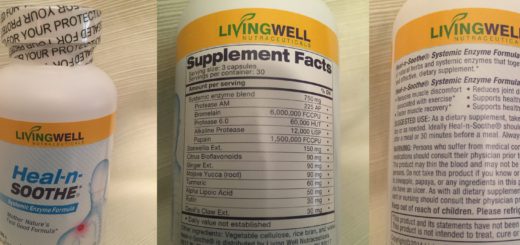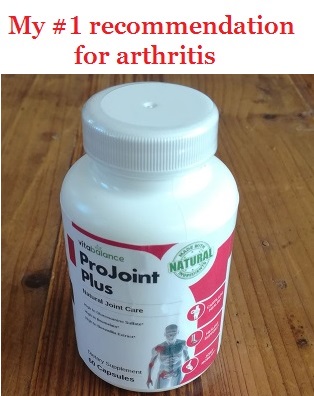Top 13 Causes Of Shoulder Joint Pain – Which One Is Yours?

Have you just woken up with a terrible pain in your shoulder? Or is your shoulder bothering you for a while now? Well, I’ve been in that situation too. And if you don’t know what’s behind your pain, this article is exactly what you need.
Here are the top 13 causes of shoulder joint pain. Unless your problem is extremely rare, you will surely find yourself here. Statistically speaking, there are about 95% that your pain is caused by something on that list.
So which one is yours?
1. Bad Sleeping Position
Best Sign To Recognize It: Morning pain that gets better with every hour. It only hurts when moving
Each of us experienced shoulder pain once, right? Well, in most cases, there’s no medical reason other than a wrong sleeping position. Either you changed the bed, you used a harder pillow or you simply fell asleep in a bad position.
In this case, the pain appears immediately after you wake up, not during the day. It also tends to last just a few hours, not any longer. Sometimes it may last more, but the pain improves with every hour. Besides, it only appears when you move. It’s not that kind of chronic pain that you feel every second. It’s only bothering when you move you neck or shoulder. Does that seem familiar?
So if that’s causing your shoulder joint pain, just wait. It will go away on its own, after a few hours.
2. Osteoarthritis
Best Sign: Pain that starts mild and grows in intensity with every week
Who would think of osteoarthritis when it’s just your shoulder hurting you? Well, there are enough patients with shoulder osteoarthritis. This means their shoulder joints are affected more than the other joints.
This condition can cause shoulder pain alone. So you may have osteoarthritis and have no leg, hand or back pain. In most cases, there are several painful symptoms, that’s true. But if your condition is at the beginning, you may experience only shoulder pain.
So how can you know if it’s osteoarthritis behind? Well, your pain should increase in intensity with time. If your pain was a 1 six months ago and it’s still a 1 today, there’s probably other cause. Osteoarthritis pain worsens with time in almost every case. Luckily, there are ways to keep it under control.
3. Exercising
Best Sign: Pain only appears the next day after an intensive workout and lasts less than 2 days
Did your pain appear after a previous day of exercising intensively? Even if you work out daily, you can still experience joint pain at one point. That especially if you’ve been working harder than usual on the other day.
In this case, we’re not talking about joint pain. It’s not your shoulder joints hurting, but your muscles. However, you can’t tell the difference because the pain feels pretty similar. If you’ve been working our your legs and arms as well, they should also feel more or less painful. But if it’s only been your shoulders, you might experience a certain level of shoulder pain.
Just like the pain caused by sleeping, this shouldn’t last more than a day or two at most. You should normally feel better with every hour. If you don’t, it’s probably not exercising behind.
4. Shoulder Dislocation
Best Sign: Pain is so bad that you can’t perform any activity (even sitting hurts). It’s always caused by a trauma and it appears immediately after
You probably heard of shoulder dislocation, because it’s a real nightmare. The pain from this condition is considered very intense, over 5 on the pain scale.
Accidents are the most common cause of dislocation. Either car accidents, bike falls or anything of the kind. You can’t get a shoulder dislocation from arthritis or tendinitis.
Keep in mind that the pain usually appears very shortly after the trauma. If you were involved in a car accident, you would feel the pain immediately, not after a few hours. Besides, you won’t be able to move your arm properly, which is a very clear sign for the doctors.
So if you suspect you might be having a dislocation, you’re probably not. If you had, you would be in such pain that you couldn’t be reading this.
5. Tendinitis
Best Sign: Only part of your shoulder is affected. That part is swollen and hurts when you move it
If you never heard of it before, you should know that tendinitis is the inflammation of tendons. In this case, we’re talking about the tendons around the shoulder muscles. It usually appears because of trauma or excessive exercising, but in most cases, it can be treated easily.
So how can you know if it’s tendinitis behind your shoulder joint pain?
The typical sign of this condition is that the pain appears only when you move your arm. You should either lift, bend or lie on your shoulder to feel the pain. But if you’re not moving your arms, you shouldn’t normally feel any pain.
6. Neck Strain
Best Sign: Pain can vary in intensity, but it’s always caused by an accident. It doesn’t appear immediately after
Just like shoulder dislocations, it’s hard to strain your neck just by sitting in the bed. This problem usually involves a trauma, and in most cases, it’s either a car accident or a fall.
But unlike dislocations, you won’t always feel the pain immediately after. In some cases, it can take up to a day before you start feeling any pain in your neck and shoulders.
The good news is that neck strains usually heal by themselves. That doesn’t happen overnight, though. It usually takes a few weeks until the pain goes away completely.
So if you’re suspecting it’s a neck strain behind your pain, review your previous days activities. If you didn’t experience any trauma, it’s surely not a neck strain but another point on that list.
7. Rheumatoid Arthritis
Best Sign: Morning stiffness accompanies the pain. The other joints are also hurting, you can’t have only shoulder pain
Just like its step brother, rheumatoid arthritis can also cause shoulder pain and stiffness. But if you have RA, you usually experience several kinds of joint pain besides this.
So how can you know if it’s rheumatoid arthritis behind?
Well, shoulder stiffness is a must in every morning. No matter what supplements you’re taking, you won’t get rid of it completely. The stiffness normally takes about an hour, but with the right supplements it may even last 5-10 minutes. So this is the best sign to tell if it’s RA behind.
When it comes to the pain, you can’t have only shoulder pain with RA. If you do, it’s probably not rheumatoid arthritis causing it. As it’s an auto-immune condition, it will affect several joints of your body. So you should normally experience leg, hands and even back pain with rheumatoid arthritis, besides the shoulder pain we’re talking about.
8. Osteomyelitis
Best Sign: The shoulder is very swollen, red and warm and you have high fever
Though it’s a pretty rare condition, osteomyelitis is a bone infection, usually with a bacteria called Staphylococcus aureus. Just like most infections, it can be extremely dangerous if it’s untreated.
Unlike the other causes from above, osteomyelitis can affect anyone. So you don’t need a trauma or an accident to develop this condition. But as it’s an infection, people with immunity problems are more likely to get it.
So how can you know it’s osteomyelitis behind your shoulder pain?
Well, inflammation is a must for osteomyelitis. The affected part of your shoulder would surely get swollen, warm and feel very painful when you touch it. Besides, only one of your shoulder will be affected, so you will be able to tell the difference. You should also get a pretty high fever, which is a clear sign of infection.
So there are pretty low chances that it’s osteomyelitis causing your pain. But if it is, inflammation and fever and 2 obvious symptoms.
9. Bursitis
Best Sign: The shoulder is inflamed but there is no or little fever (very similar to tendinitis)
That’s another inflammatory condition, but in this case it’s not a bacteria causing it. Bursitis appears with the inflammation of bursae, some fluid-filled sacs that reduce friction between the tissues of our body. The bursae are located close to the joints, so that’s why we feel the pain as a typical joint pain.
Just like osteomyelitis, bursitis also produces inflammation, so your affected shoulder will feel very swollen and painful. However, if you have bursitis, you shouldn’t experience any fever (or a very low one at most). That’s because it’s not an infection, but a local inflammation.
Besides, you can also develop a tendinitis, as a consequence of the inflammation.
The good news is that bursitis usually heals by itself in a few weeks. So you shouldn’t need more than painkillers to cope with the pain.
10. Polymyalgia
Best Sign: Morning stiffness is associated, but it’s not a must. Shoulder pain is more common than any other joint pain
Polymyalgia is one of those conditions that don’t have a certain cause, other than genetic factors. Scientists can’t explain its mechanism yet, and that’s why there’s no treatment that can cure polymyalgia.
In symptoms, this condition is somehow similar to rheumatoid arthritis. It produces different kinds of joint pain, especially in shoulders. There’s also stiffness, especially after long periods of sleeping or sitting down.
So how can you know if you have polymyalgia or not?
Well, it’s only blood tests that can tell for sure. However, if you experience shoulder and different kinds of joint pain, this might be the problem behind. The bad news is that it’s hard to differentiate it from RA, judging after the symptoms. So blood tests remain the best option.
11. Muscle & Tendon Issues (Rotator Cuff)
Best Sign: Pain only appears with movement, but usually affects athletes
One of the most common causes of shoulder joint pain are actually muscular problems. And the most affected group is a so-called Rotator Cuff.
These four muscles and tendons can get injured easily, because of intensive workouts, accidents or even medical conditions like bursitis and tendinitis (above mentioned).
So how can you tell it’s the rotator cuff causing your pain? Just like in tendinitis, you can’t feel the pain all the time. Either you sleep on your shoulder, you raise your arm or you simply try to lift something. These are all activities that would cause pain in your shoulder.
However, fortunately muscle tears don’t happen to everyone. Athletes are more likely to experience them than regular people. And even if you believe this is your diagnosis, an MRI can tell for sure.
12. Frozen Shoulder
Best Sign: Stiffness is worse than pain and it appears at any time of the day
The name describes the symptoms of this condition better than anything. Frozen shoulder isn’t a medical condition itself, because there are no pathologic changes inside the shoulder.
Instead, it appears to people who suffered surgeries recently and they are unable to move their arms and shoulders properly. Take mastectomy for example. As you cannot move your body normally, part of it becomes stiff and even painful after a while.
The best treatment for a frozen shoulder is physical therapy. Exercising may not be easy at first, but if you do it gradually, your shoulder will recover completely after a few months. The pain and stiffness will also start to go away with time.
13. Shoulder Instability
Best Sign: Shoulder feels very loose. Pain isn’t very strong and it only appears with movement
Though it’s not a medical condition itself, shoulder instability is a pretty common cause of pain. How can your shoulder become instable, considering it’s the most mobile joint you have?
Trauma, injuries or overuse are the most common causes. That’s why athletes and people who work out daily are the most likely to develop this problem.
So what are the symptoms behind shoulder instability?
The best way to recognize this condition is feeling your shoulder very loose, like it’s simply “hanging there”. The pain may or may not exist, but in most cases, moving your shoulder is pretty painful.
So What’s The Cause Behind Your Shoulder Joint Pain?

There are several situations that may be responsible for your pain. If you have recently suffered a trauma or an accident, your pain is surely related to it.
On the other hand, you might already have a risky condition, like arthritis or polymyalgia. If you’re in that situation, that’s probably the cause behind your pain.
However, things can be even less serious than this. Maybe you just had a bad night, and your pain is a consequence of your bad sleeping position.
Or you may have had a recent surgery near your shoulder, so obviously you couldn’t move your arms properly. That could also be the cause of your pain, and exercising will solve it.
In most of these cases, your pain may even go away on its own after a while. But it’s better to keep it under control and to do this, knowing the cause is a must.





I had a shoulder pain for 2 days and I had really trouble finding the real cause. After going through your post, I’m thinking it can be my gym routine. I’ve been working out my back muscles a lot lately, and I started getting this sudden pain. Judging after the symptoms you mentioned, I think that’s it.
It’s my shoulder aching, I’ve got no other joint pain.
What do you recommend other than skipping gym? I’m close to a busy period and I can’t lose any of these workout days now. I hope there is anything else to do.
Hi William, from how you describe the pain, it’s probably because of gym.
Taking a break would be the best thing, but if you really can’t, I recommend you this cream. It’s basically for joint pain, but it’s also recommended for people who work out intensively. You can also take some NSAIDs if the cream doesn’t relieve your pain completely, though it should.
Hope this helps.
Hi Heather. It seems that you really know a lot on this topic, so maybe you can help me too.
I have osteoarthritis in my left hip and my shoulder started bothering recently. I don’t always feel the pain, but when it do, it’s pretty annoying.
I read your article closely but none of the causes fits me. So do you think my pain could be a cause of osteoarthritis? Does this mean that my disease is progressing? Then what can I do about it. Thanks
Hello Lasha. From what you’re telling me, it’s probably the same osteoarthritis behind your shoulder pain.
That doesn’t necessarily mean that your condition is progressing or getting worse. Osteoarthritis isn’t like cancer, it doesn’t spread. So your shoulder OA doesn’t have much to do with your hip OA. It’s simply because your shoulder cartilages are also worn up, and that’s usually because of age. So don’t worry too much about your OA progressing, because that doesn’t matter much.
When it comes to remedies, I think you should first consult a doctor. He will probably not change your treatment, but it’s better to have a consultation. This is the best OA supplement I know, and you might want to try it if your pain doesn’t seem to go away. Other than that, I advise you to follow a healthy diet and avoid processed food as much as you can.
Hope this helps 🙂